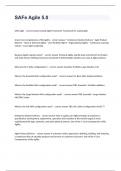Samenvatting
Summary Complete & Concise - Research Skills
- Instelling
- Erasmus Universiteit Rotterdam (EUR)
*New* get it cheaper: . Complete & Concise summary of Research Skills, part of MSc Finance & Investments. The summary aims to cover 99% of theory as concise as possible. Perfect for use when practicing or revising for your exams or, in 2020, as source during the exam. It covers statistical theory f...
[Meer zien]













